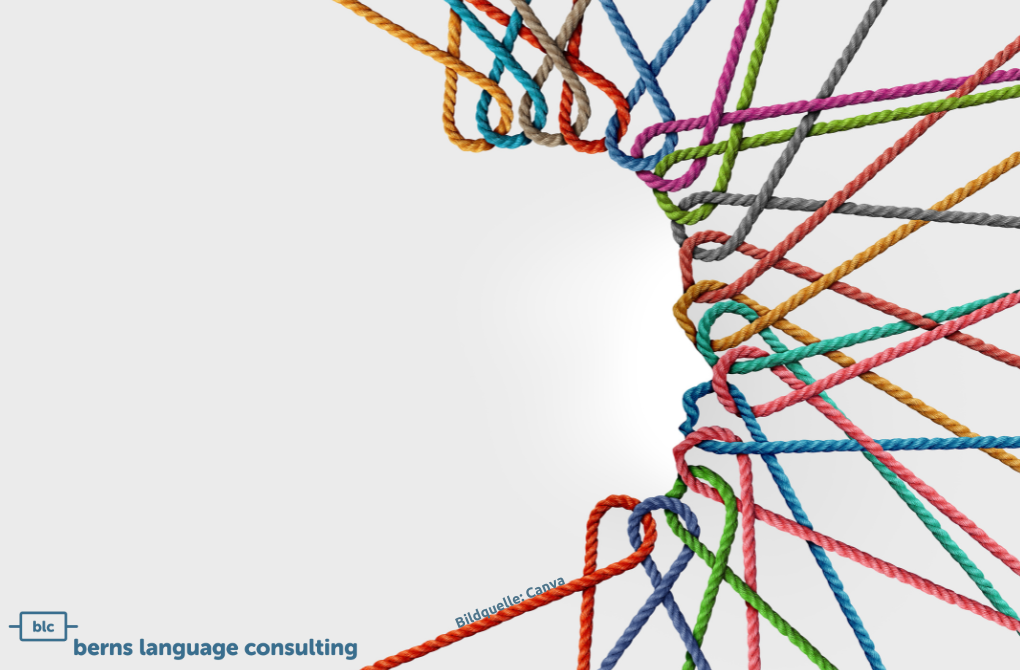Terminology management is one of the cornerstones of an efficient translation workflow. The step-by-step terminology development via regular term extractions and an expert suggestion procedure for new terms guarantee that the terminology is always up-to-date.
For some time now, ontological management systems have been increasingly becoming the focus of terminology management alongside traditional terminology management systems – and are experiencing a new boost through ChatGPT & Co.
The core of terminology management is represented by the terminology categories ‘concept’ and ‘term’ across all the software.
For example, it is possible to use the (further) terms “car” and “automobile” for the concept “passenger car”.
Different usage statuses for terms indicate whether the term is a preferred, allowed, or unwanted.
In addition, there is a larger or smaller number of configurable attributes, which enable the search for term groups with shared properties (e.g. creation date, context, grammatical information belonging to the subject area, etc.).
However, this cannot help much when one wants to know what relations the concept has with other things in reality.
So-named ontologies provide a remedy here. They give a structure as an image of the real relations between things in terminology:
An ontology is a “formal specification of the terms and relations in a domain”(Protégé).
Ontological Terminology Management: The Systems
For several years now, ontological / semantic terminology systems are increasingly demanding their place alongside classical terminology management systems.
Ontological systems that are used for or that can be used for terminology management differ in complexity and operation as traditional terminology management systems.
An example of terminology systems with ontological orientation is e.g. Coreon, for which there is also an online demo.
The Concept Maps in Kaleidoscope’s terminology management system Quickterm can also be flexibly placed over the term stock in order to map hierarchical relations.
Another semantically even deeper approach shows the software from Empolis, which also enables conclusions and complex search queries via manually created relations between concepts.
With the latter system, the alignment is clearly in the direction of ontologies and terminology management can be established as a complement.
Terminology 2.0 – Is It Worth The Effort?
The creation of terminologies in ontological systems involves an additional effort to create structural relationships between concepts, which can initially have a deterrent effect on the terminologist.
But the extra effort is worth it, and not only the terminologist can benefit from the new structure:
1. Finding definitions
For the terminologist, who decides on the validity of proposed or automatically extracted terms and must refer to expertise to define them, is important to have as much prior information as possible.
A networked terminology presentation with definitions and properties is a great help here.
The proximity to adjacent, broader and narrower concemakes it easier to create definitions, because the information they already contain allows derivation, and differentiators between concecan be systematically captured.
If no definitions can be derived from the existing information, the hierarchical positioning of the concept in the system facilitates the queries to the respective expert, since the terminologist can specifically ask for the classification into existing subsections of the concept hierarchy.
2. Completeness
Technical products naturally have a modular / hierarchical structure, which can be well represented by an ontology.
The structure of an automobile, for example, can be represented in a hierarchy of parts of broader and narrower concepts, from the body to the smallest components of the engine and the circuits in control units.
Such a hierarchical termbase makes it much easier for the terminologist with a broad knowledge of the application area to identify conceptual gaps in the system.
Instead of relying on important groups of concepts (e.g. all accessories for a product) to be recorded via the suggestion process or term extraction, the terminologist can use an ontology to proactively examine the specialist field to find all relevant narrower concepts of a broader concept for an incoming term proposal.
In this way, product groups with shared properties can be systematically included and the term inventory can be completed.
The terminologist can devote himself to a new field of terminology without having to constantly switch between different definition groups.
3. Networked Knowledge
The linking of information not only leads to a better overview of the existing world of concepts, but also enables the development of knowledge correlations that were not previously obvious or usable.
This means that ontological terminology management falls within the scope of the numerous methods around the term Big Data. Nevertheless, a terminology inventory does not necessarily need to have millions of entries in order to be used, for example,
for classification methods and semantic searches.
Information structures can also be mapped with a manageable terminology stock. That makes it possible, for example in the automotive industry, to search for all vehicles of the ‘estate car’ type, which are subject to specific characteristics such as luggage compartment volume, The number of seats and all-wheel system are suitable for both a trip with a dog to the countryside and a family trip.
The possibilities of exploiting the relations between and properties of terms are numerous and play an increasingly important role in the visibility and user-friendliness of offers on the net as digitization progresses.
4. Ontologies As The Basis For AI Applications
Ontologies are currently experiencing a renaissance in the context of AI and Large Language Models (LLMs).
In a world where the general availability of information has increased immensely through ChatGPT & Co, ontologies provide the ability to control the flow of information relevant to the business.
Thus, the use of ontological terminology systems allows the company’s own products to be classified and defined – and the customer to receive a tailor-made answer.
In doing so, the chatbot accesses the corporate know-how stored in the ontology in the form of defined terms that have been set in relation to each other.
The synonyms stored in the terminological entry allow a large number of differently formulated user requests to be understood and guided into the right directions.
This gives the company a significant competitive edge by being able to influence and improve the answers that the chatbot gives.
From Old to New – The Transition
If a terminology management system already exists, the formal conditions of both systems must of course be recorded before switching to an ontological system in order to ensure a lossless transfer of entries.
Some systems can also import data automatically from formats such as TBX.
Depending on how complex the description of relations and properties should be in the new system, a considerable manual effort is required at the beginning, which, however, pays off later on through increased information gain at many levels.
We are happy to help you find optimal system solutions that meet all your business needs.
Do you want to know how you can benefit most from ontological terminology management systems, but are you puzzled about how to implement it the easiest way? Contact us to learn how you can make your terminology processes most efficient and how artificial intelligence can help you.
We will be happy to advise you!
Cover photo created with Canva.





